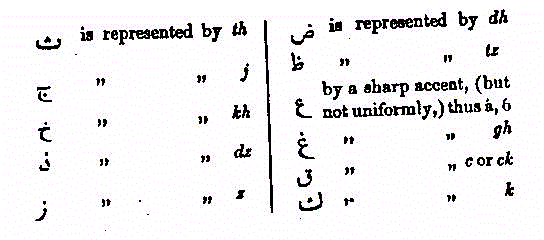
IT may be necessary to mention that this History, in a slightly different form, has already appeared in a series of articles published in the Calcutta Review.
The work was undertaken, and the study of Oriental authorities first entered upon, at the instance of the Rev. C. G. PFANDER, D.D., so well known as a Christian apologist in the controversy with the Mahometans1, - who urged that a biography of the Prophet of Islam, suitable for the perusal of his followers, should be compiled in the Hindoostanee language, from the early sources acknowledged by themselves to be authentic and authoritative.
I had at first hoped that some one of the existing biographies, with certain modifications and adaptations, would, when translated, answer for this purpose, but as my study of the original sources advanced, and the field of enquiry expanded, I found that there was no treatise, either in English or in any of the continental languages, entirely adapted for the end in view. The authorities to which I had access, were more complete and authentic, than any available in Europe; while the work of Dr. SPRENGER, which came out as I was pursuing my studies, appeared to me (as I have shown in some passages of this treatise) to proceed upon erroneous assumptions, both as to the state of Arabia prior to Mahomet, and the character of the Prophet himself. Thus the want of a complete and suitable biography insensibly led me on to the compilation of the materials which I now venture to lay, in a digested form, before the public.
The original works from which I have drawn, -their character and authority, - are discussed in an introductory chapter.
A second chapter of the Introduction has been devoted to a consideration of the bearing of the remote and patriarchal history of the Peninsula on the subsequent narrative. A third reviews the pre-islamite state of Arabia, as gathered from Mussulman tradition. The fourth enters into a detailed account of Mecca during the century preceding the birth of Mahomet.
The first and second chapters of the main work bring down the life of the Prophet to his fortieth year. In the third, I have ventured to discuss that which forms the grand difficulty of my subject, the claim advanced by Mahomet to inspiration. I have done this, I trust, with the combined caution and freedom which the obscurity and the importance of the question demand. 'The fourth, fifth, and sixth chapters carry on the Biography, together with the progress of Islam, to the era of the Hegira. In each chapter, I have sought to illuatrate the staternents of tradition by the contemporaneous revelations2 of the Coran. A concluding chapter is devoted to the relation borne by Islam to Christianity.
In commending my work to favourable consideration, I will only add that it has been written amid the engrossing avocations of official business; and that the reader must not, therefore, look for that elaborate research and completeness of disquisition which, under other circumstances, he might have been justified in expecting. It should be recollected, too, that the facilities for consulting works of occidental learning are, in these remote parts of India, rare and imperfect.
In regard to the orthography of names, it has been my principle to preserve unchanged, words already naturalised in our language. Thus I write Mecca, not Makka; Caliph, not Khalifa; Mahomet, not Muhammad. There is in this course, the additional advantage as regards the latter word, that Mahomet is thus distinguished from other men of the name of Muhammad.
In other respects, I have endeavoured to adopt an uniform system of orthography, without pressing it to an awkward or inconvenient extreme. The following is the ordinary rendering of certain letters:-

I have not thought it necessary to descend to farther discrimination, which would have confused and disfigured my pages.
I must record the deep obligations under which I lie to Dr. Sprenger, not only for the valuable materials presented in his Biography of the Prophet, but for his ready assistance in directing me to the manuscripts of Wackidi, Hishami, and Tabari.
The original MSS. of the Katib al Wackidi and Tabari are now in my hands. I had hoped to place the manuscript of the Katib al Wackidi (as well as copies of Tabari and Hishami, written so as to correspond with the originals, and with the references throughout this book,) in one of the Public Libraries in England. But I find that the owner is unwilling to part with the original MS. on any terms. He says it is Wacf or property devoted to sacred purposes. I entertain a hope that the Calcutta Asiatic Society, or some other association devoted to Oriental learning, may be able to undertake the publication of this most interesting manuscript. A facsimile of the clear and ancient writing would be the most accurate and useful form of publication.
AGRA, 2nd January, 1857.
Books by William Muir
More on Muhammad
Answering Islam Home Page